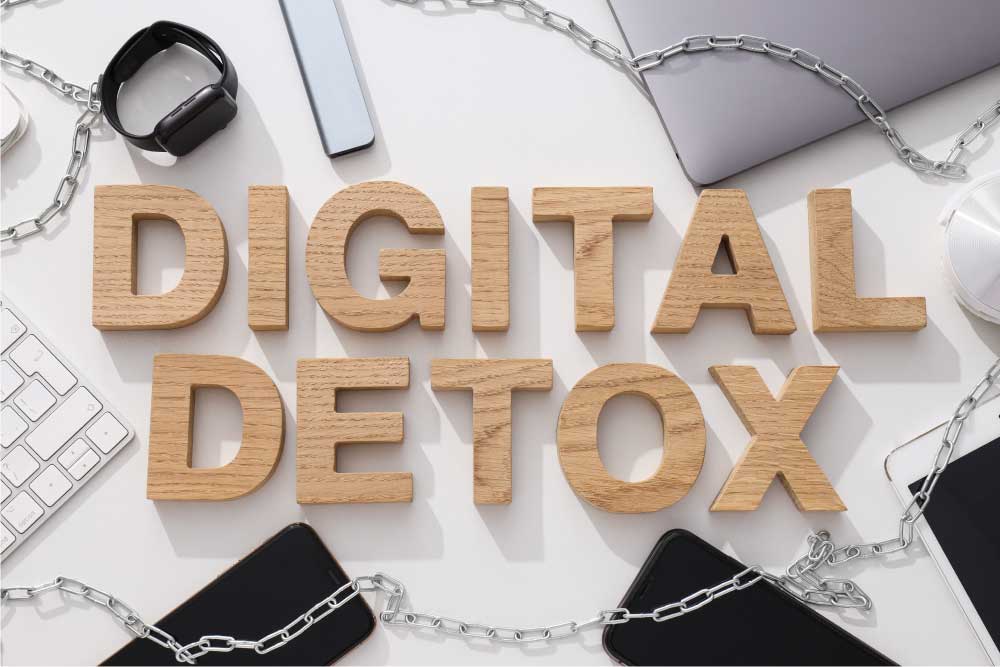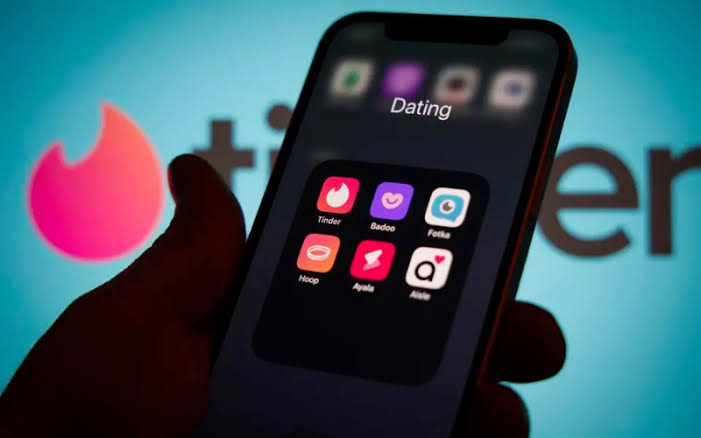
Digital Detox: Unplugging and Finding Balance in a Technology-Driven World
While technology has revolutionized the way we communicate, work, and relax, it’s also created an overwhelming digital environment that can easily take over our mental and emotional well-being. Constant notifications, the pressure to stay connected, and the endless consumption of information can leave us feeling exhausted, anxious, and detached from the present moment.
This is where the concept of a digital detox comes in—a conscious, intentional break from technology designed to help us reset, recharge, and reconnect with ourselves and the world around us. A digital detox isn’t about shunning technology entirely but rather finding a balance that allows us to use it mindfully while prioritizing our mental, emotional, and physical health.
In this article, we’ll take a deep dive into the importance of a digital detox, how it can positively impact your well-being, and practical steps to start unplugging and regaining balance in a technology-driven world.
The Impact of Technology on Our Well-Being
While technology has brought countless benefits, its omnipresence has created significant challenges for our mental and emotional health. Studies show that excessive screen time and constant connectivity can lead to a range of negative outcomes, including:
1. Increased Stress and Anxiety
The constant barrage of notifications, emails, and messages creates an always-on mentality that prevents us from fully unwinding. We often feel the pressure to respond immediately, which can increase stress levels. Social media, in particular, can contribute to feelings of anxiety and inadequacy as we compare our lives to the carefully curated highlights of others.
2. Decreased Focus and Productivity
Multitasking between multiple apps and platforms can fragment our attention, making it difficult to focus on any one task. Studies suggest that excessive use of technology diminishes our ability to concentrate, negatively affecting productivity, creativity, and even cognitive function.
3. Disrupted Sleep
Screen time, especially before bed, disrupts the body’s natural sleep cycle by inhibiting the production of melatonin, a hormone that regulates sleep. The blue light emitted by screens interferes with our ability to fall asleep, leading to poor-quality rest, which can further contribute to feelings of fatigue and irritability.
4. Social Isolation
While technology is designed to connect us, it can sometimes do the opposite. Engaging more with screens than with people in real life can lead to feelings of loneliness and isolation. Virtual interactions don’t always provide the same depth of connection as face-to-face conversations.
5. Negative Effects on Mental Health
Excessive use of technology, especially social media, has been linked to negative mental health outcomes, including depression, low self-esteem, and body image issues. The addictive nature of scrolling through news feeds, watching videos, or playing games can leave us feeling drained rather than fulfilled.
What is a Digital Detox?
A digital detox is a period of time during which you consciously reduce or eliminate your use of digital devices, including smartphones, tablets, laptops, and social media. The goal is to step back from the constant influx of information, notifications, and distractions to focus on being more present in the moment and reconnecting with yourself and the people around you.
The idea isn’t to demonize technology or suggest that we completely disconnect indefinitely—it’s about recognizing the toll that overuse can take on our well-being and making room for more meaningful, mindful interactions with both the digital and physical world. It’s about creating balance.
Why You Should Consider a Digital Detox
1. Improved Mental Clarity and Focus
One of the most immediate benefits of a digital detox is the restoration of mental clarity. Without the constant pull of notifications or the temptation to scroll endlessly, your mind is free to focus on the task at hand. You’ll likely notice that your concentration improves, along with your ability to engage in deeper thinking and problem-solving.
2. Better Sleep Quality
By taking a break from screens—especially in the hours leading up to bedtime—you can reset your body’s natural sleep rhythms. Reducing your exposure to blue light helps improve the quality of your sleep, making it easier to fall asleep and wake up feeling refreshed.
3. Enhanced Emotional Well-Being
Stepping away from the pressures of social media and the never-ending news cycle allows you to reconnect with your emotions in a healthier way. You’ll spend less time comparing yourself to others, and more time appreciating your own life. A digital detox can help reduce feelings of anxiety, stress, and self-doubt, replacing them with a sense of calm and contentment.
4. Increased Creativity and Productivity
When your mind isn’t constantly occupied by digital noise, there’s more room for creativity to flourish. A digital detox encourages you to tap into your natural creativity, whether that’s through writing, painting, problem-solving, or brainstorming new ideas. You’ll also find that your productivity levels rise as you’re able to focus on tasks more deeply without digital distractions.
5. Stronger Relationships
Unplugging allows you to be more present in your relationships. Instead of multitasking between a conversation and checking your phone, you can fully engage with the people around you. This leads to deeper, more meaningful connections and improves your overall sense of belonging.
How to Plan Your Digital Detox
A successful digital detox doesn’t mean you have to give up all technology forever. Instead, it’s about making small, intentional changes that help you regain balance and create healthier digital habits. Here’s a step-by-step guide to planning your detox:
1. Set Your Intentions
Before you start your digital detox, it’s essential to define your reasons for doing so. Ask yourself why you want to unplug. Are you feeling stressed, overwhelmed, or disconnected? Do you want more time for hobbies, relationships, or self-reflection? Setting clear intentions will keep you motivated and help you measure the success of your detox.
2. Determine the Scope of Your Detox
A digital detox can take many forms, depending on your lifestyle and goals. You don’t have to completely eliminate all technology—start by identifying which areas of your digital life are causing the most stress or distraction. You might choose to:
- Avoid social media for a set period (e.g., one week or one weekend).
- Limit your use of certain apps or websites.
- Designate specific “tech-free” times or spaces in your home, such as during meals or in the bedroom.
- Set a daily screen time limit.
3. Prepare for Success
Before starting your detox, take a few practical steps to ensure you can stick to it without unnecessary frustration:
- Inform others: Let family, friends, or colleagues know that you’re doing a digital detox so they can support you and adjust their expectations around communication.
- Remove distractions: Consider deleting or temporarily disabling apps that you know will tempt you, such as social media, games, or streaming services.
- Set up alternatives: Plan activities to fill the time you would normally spend on your devices. This could include reading, exercising, journaling, cooking, or spending time with loved ones.
4. Start Small and Build Momentum
If the idea of unplugging for an extended period feels overwhelming, start small. Try a tech-free evening once a week or set boundaries around specific times of day when you won’t use technology (such as during meals or in the first hour after waking). Gradually increase the duration of your detox as you become more comfortable.
5. Engage in Mindful Activities
Use the time away from screens to focus on activities that nurture your well-being, such as:
- Meditation or mindfulness practices: Use your detox to reconnect with the present moment through meditation, deep breathing exercises, or mindful walking.
- Creative hobbies: Rediscover hobbies that bring you joy and fulfillment, such as drawing, writing, or crafting.
- Physical exercise: Engage in regular physical activity to boost your energy levels and improve your mental clarity. Activities like yoga, walking, or even a dance class can help you stay active and grounded.
- Spending time in nature: Nature has a calming effect on the mind and body. Use your detox to spend more time outdoors, whether it’s a hike in the mountains or a simple walk in the park.
6. Reflect on Your Experience
At the end of your digital detox, take time to reflect on how it affected you. Did you feel more focused, relaxed, or productive? What did you miss about being online, and what didn’t you miss? Use these insights to inform your future digital habits. You may find that you want to integrate regular digital detoxes into your life to maintain a healthy balance.
Creating Long-Term Digital Balance
Once you’ve completed your digital detox, it’s essential to find ways to maintain balance in your day-to-day use of technology. Here are a few strategies for creating sustainable habits:
1. Set Boundaries
Establish boundaries around your technology use to prevent it from encroaching on your personal time. This might include:
- Turning off notifications for non-essential apps.
- Establishing “tech-free” zones in your home (like the bedroom).
- Setting aside specific times each day to check emails or social media.
2. Practice Mindful Tech Use
Be intentional about how and when you use technology. Before reaching for your phone, ask yourself: “Why am I doing this?” and “Is this the best use of my time right now?” Mindful tech use allows you to focus on what matters and avoid getting sucked into mindless scrolling.
3. Prioritize Offline Activities
Make time for offline activities that bring you joy and fulfillment. Whether it’s reading, exercising, or spending quality time with loved ones, prioritize activities that nurture your well-being and encourage you to stay present.
Conclusion
A digital detox is a powerful tool for reclaiming control over your relationship with technology. By consciously unplugging and finding balance, you can reduce stress, enhance your well-being, and rediscover the simple pleasures of life outside the screen. In a world where technology is ever-present, taking time to step back and reconnect with yourself and others is more important than ever.
Start small, set realistic goals, and remember that it’s all about finding what works best for you. Unplugging may feel challenging at first, but the mental clarity, emotional peace, and renewed sense of connection you’ll gain make it worth the effort.





